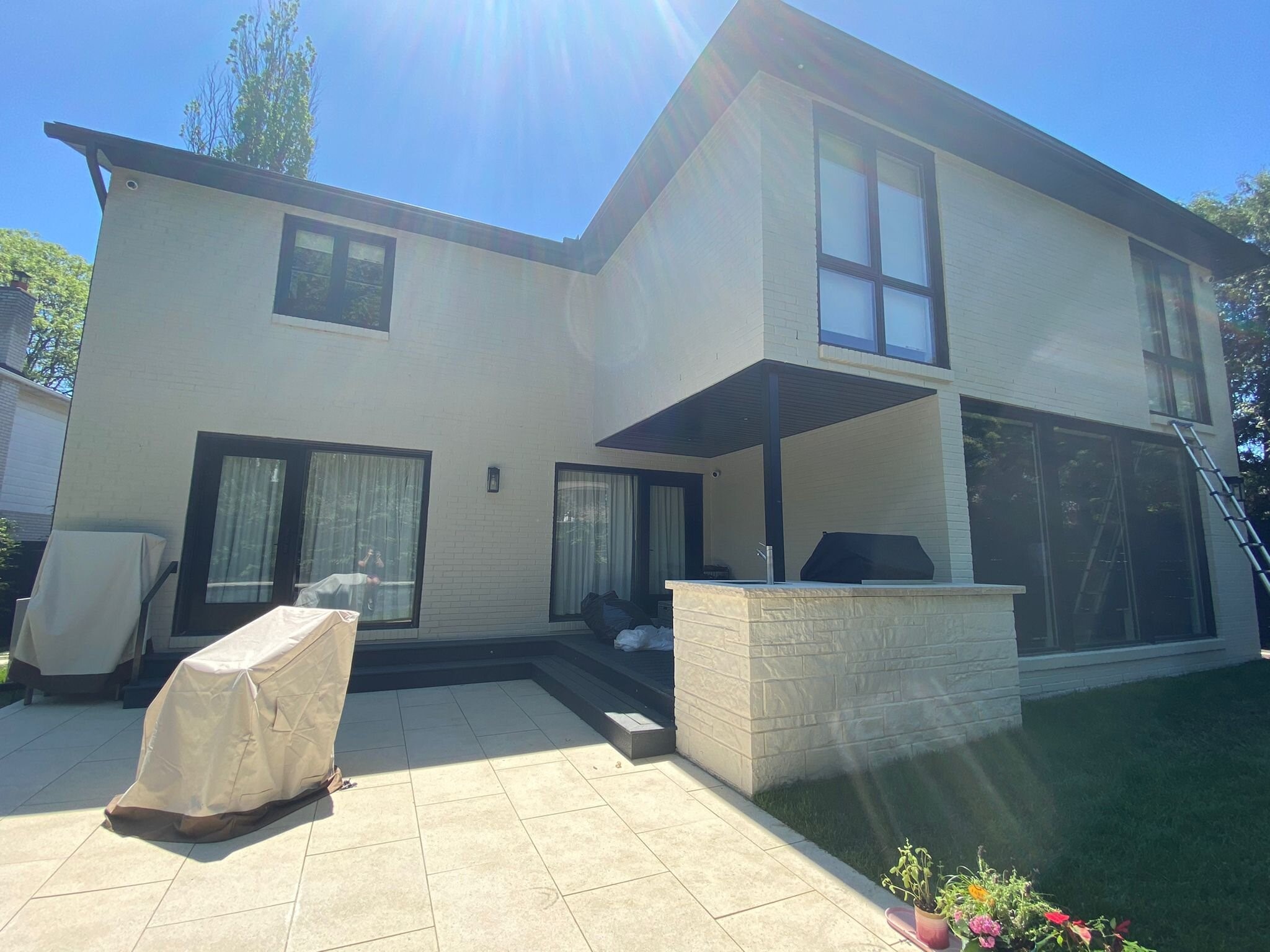When most homeowners think of stains, they tend to think of a clear, varnish-like substance reserved for wooden porches and deck chairs, but in reality, stains can be used for so much more, especially if you are using solid colour stains. Solid colour stain is a rich, opaque stain that provides a flat-finished covering to a material while allowing the texture of the material to show through. They are used to accent certain features of some materials, while often having protective properties. Though this may seem similar to paint, there are some key differences that you should know when deciding whether to use solid colour stain for your home.

Where can solid colour stain be used?
Though solid colour staining is generally associated with wooden surfaces, there are many materials that are perfect for this technique. Because of the way solid colour stain absorbs into a surface, very porous materials like brick and concrete are great materials to use it on. The stain gets into every crack and crevice, colouring and protecting a surface, really bringing it to life. However, because of this, very smooth surfaces do not react well to solid colour stains. For example, if you are working with aluminum siding, there is nothing in the material for the stain to absorb into, and as a result it doesn’t hold. For this reason, it’s best to stick to paint if you are planning on working with smooth, non-porous materials!
Benefits of solid colour stain
In addition to their appearance, there are many benefits to using stains for your home, especially if you are planning to use them on wood. This is because stains in general are designed to not only look great on wood, but to protect it as well. Many contain water repellents and wood preservatives, which help protect against warping, rot, and splitting, which means the wood will not only be pleasing to the eye, but will last longer too! They are easy to use, and after a quick stir, are ready to go right out of the can. When looking at solid colour stains specifically, there are even more reasons to use them. As opposed to semi-transparent stains, with its almost paint-like appearance, solid colour stain conceals the grain of the wood and lets only the texture show through, which can be really useful. If you are working with heavily blemished wood, or with different wood types, this hiding power can make any surface look like it came from the same tree, concealing any marks while accentuating the rich texture.
The difference between a solid stain and paint
The main difference between a solid stain and exterior paint is the way that each interacts with a material. Whereas paint sits on top of a surface, solid stain absorbs into it. This means that instead of peeling like paint does, solid stain fades with age. As a result, solid colour stains tend to look better than paint does as time goes on. As well, solid stain is a lot easier to prepare and apply than paint is, not requiring priming (except on some materials like we talked about!) and being much more forgiving when it comes to putting on the stain evenly. Because solid stains absorb into a material, they also tend to have a better hold than paint does, meaning it will last longer and not need to be touched up as regularly. However, though solid colour stain does a better job at hiding imperfections in a surface than semi-transparent stains, it won’t hide the imperfections quite as well as a coat of paint would. This is because of the way paint sits on a surface instead of absorbing into it, giving it more coverage for grains and imperfections. But remember, this coverage will hide a lot of the texture of a surface that a solid colour stain would bring out. It will be up to you to decide what product is best for your project based on how much texture you want to show and what blemishes and imperfections you want to hide!
These are just a few things to keep in mind when deciding whether to use solid colour stain. Because every home is different, and so much depends on personal preference, we wanted to shed some light on this lesser known product, so you can decide if solid colour stain is right for your project. And if you’d prefer to have a professional hand applying it, having nearly a decade and half of experience using solid colour stain, don’t hesitate to contact Encore Painting to get your free quote today.